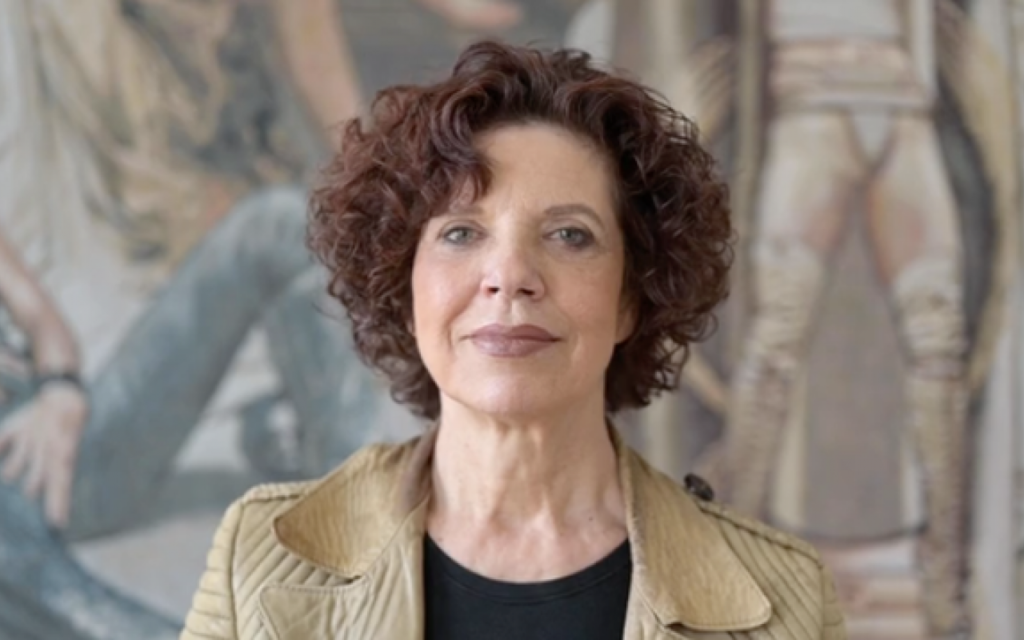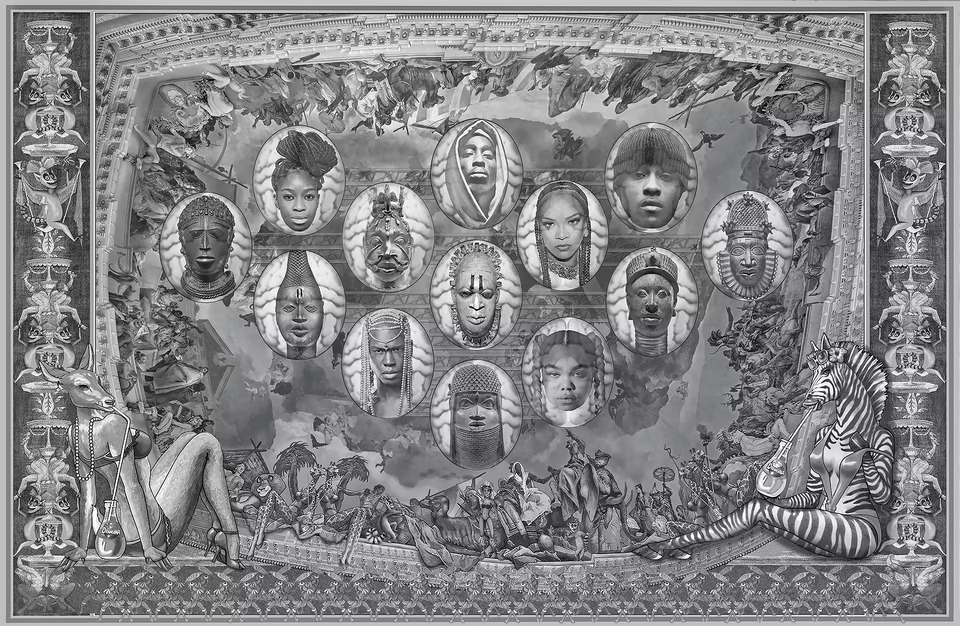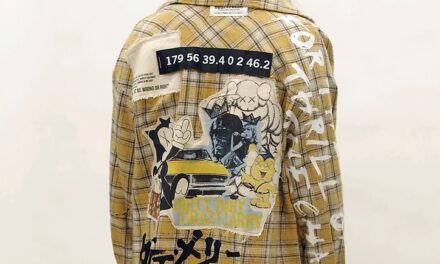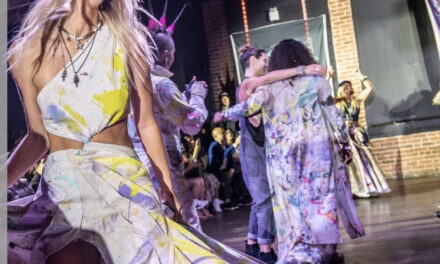Author Malcolm Bradbury once said, “Culture is a way of coping with the world by defining it in detail.” The quote begs the question of how art forms can establish a sense of identity and asks the question of how to explore this concept of defining oneself and the world.
Michael Janssen Berlin showcased the works of seven artists to explore the artistic medium of collage at NADA New York Art Fair on May 5-8. These artists were asked to delve into collage to explore artistic expression and as a tool for building a cultural identity. Artists included Louis Cameron, Yafeng Duan, Margret Eicher, Monique van Genderen, Gulnur Mukazhanova, Jonathan Schmidt-Ott, and Yonamine.

Michael Janssen Berlin at NADA New York 2022
German artist Margret Eicher is considered a pioneer of contemporary tapestry. She creates digitally and industrially printed collages through large textile works. Eicher utilizes well-known motifs from classical paintings combined with iconic pop culture images.
Margret Eicher showcased It’s a digital world 3, 2021, as well as Face & Identity, 2022. Face & Identity, 2022 discusses the restitution of the Benin Bronzes.

Margret Eicher-
Artist
The Benin Bronzes are a group of several thousand intricately decorated metal plaques and sculptures that adorned the royal palace of the Kingdom of Benin in what is now known as Nigeria. The sculptures included cast plaques, commemorative heads, animal figures, humans, royal artifacts, and more in a reflection of Benin art.
During the 19th century, British troops plundered these artworks from the Kingdom of Benin, resulting in a mass dispersion of these artifacts throughout Europe. Eicher’s piece Face & Identity, 2022 reflects on Berlins’ Ethnological Museum’s decision to return these art pieces to Nigeria. Eicher reflects her support of the decision and recognizes the long process of returning these pieces. She discussed the meaning of the tapestry.
“It means cultures are very important for the Nigerian people and their identity,” Eicher said. “I tried to compare these sculptures to very famous musicians who have their roots in Africa. Some are African, some are African Americans, and one very young singer-songwriter is German. It is this question of identity which I tried to bring into this motif.”

Margret Eicher, Face and Identity, 2022
Eicher explained the background shows an American or European viewpoint of Africa in the background of the tapestry portraying Africa in a cliché and inaccurate way.
“I’m not talking about African culture, I’m not talking about Black culture, I’m talking about the view of Europe on Africa culture.” said Eicher.
It’s a digital world 3, 2021 is proportionate to a smartphone, showcasing images of Marvel characters and the icons of popular social media platforms. It is a woven tapestry that took three months to create. Eicher explained she has different motifs on her computer and takes time to evaluate which changes are needed to complete each piece. She does the motif, artwork and applies a digital file to a digital loom to create each tapestry.
“What I am showing is rioting, protests, fighting, and it is transformed to this fantasy world of Spiderman, Batman, and Wonder Woman. It’s this metaphysic level of fighting and it is a generalism of fight. It is not special; it is very common and unspecific of antagonism.” said Eicher.

Margret Eicher, It’s a digital world 3, 2021
Eicher’s artwork utilizes motifs to engage audiences in a way that challenges their viewpoints, tying our understanding of iconic images to larger themes.
Edited by Wynter Aiken











